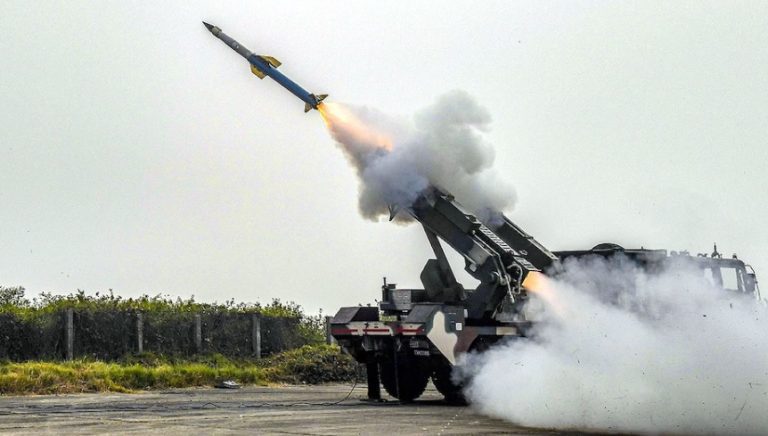Anant Shastra: India’s Next-Gen Mobile Air Defence System
The Indian Army is set to enhance its air defence capabilities with the induction of the Anant Shastra surface-to-air missile (SAM) system, a significant advancement in indigenous defence technology. This system, developed by the Defence Research and Development Organisation (DRDO) in collaboration with Bharat Electronics Limited (BEL) and Bharat Dynamics Limited (BDL), is designed to protect mobile military units from a wide array of aerial threats.
Overview of Anant Shastra
Formerly known as the Quick Reaction Surface-to-Air Missile (QRSAM), the Anant Shastra system is engineered for rapid deployment and high mobility, making it ideal for dynamic battlefield environments. Mounted on 8×8 high-mobility platforms, the system can be integrated with armoured columns, infantry combat vehicles, and artillery units, providing comprehensive air defence across various terrains, including deserts, plains, and high-altitude regions
The Statesman
.
Key Features
Guidance System: The missile employs a combination of inertial navigation system (INS) with a two-way data link for mid-course guidance and an active radar homing (ARH) seeker for terminal phase, ensuring high accuracy and reliability.
Radar Systems: Equipped with two four-walled radars—Active Array Battery Surveillance Radar and Active Array Battery Multi-function Radar—the system offers 360-degree coverage, enhancing its ability to detect and engage multiple targets simultaneously
Wikipedia
.
Warhead and Propulsion: The missile carries a 32 kg pre-fragmented HMX/TNT warhead and is powered by a single-stage solid rocket motor, providing a balance between range and payload capacity.
Mobility and Deployment: The system’s launchers are mounted on 8×8 wheeled vehicles, facilitating rapid deployment and repositioning in response to evolving battlefield conditions.
Strategic Significance
In September 2025, the Indian Army issued a ₹30,000 crore tender to BEL for the procurement of five to six regiments of the Anant Shastra system. This acquisition aims to bolster air defence capabilities along India’s northern and western borders, particularly in regions susceptible to aerial threats from adversaries
The Economic Times
.
Conclusion
The Anant Shastra system represents a significant leap forward in India’s pursuit of self-reliance in defence technology. By integrating advanced radar and missile technologies into a mobile platform, it enhances the Indian Army’s ability to counter diverse aerial threats, thereby strengthening national security and operational readiness.


